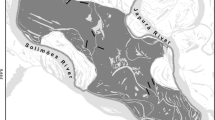Summary
Results are presented from a 3.25-year study of a nesting pair of crowned hawk-eagles and an 18-year study of a primate community in the Kibale Forest, Uganda. The proportional composition of the living population of prey species was compared with that of eagle prey and animals dying from other causes. Monkeys were the predominant pry (83.7%). They also dominated the medium-to large-sized mammalian carcasses dying from other causes (88.9%). The eagles selected prey according to species, age, and sex. Selectivity by age and sex differed between prey species. Among red colobus monkeys, the eagles selected young juveniles and infants, but in four other monkey species they selected adult males. Eagle prey selectivity by species generally supports the hypothesis that polyspecific associations among the monkeys are effective deterrents against predation. The prey/predator ratio for the Kibale eagles was much higher, but the annual offtake of prey by the eagles was much lower than that of tropical felids. Mortality due to causes other than eagles was greater than expected in red colobus and less in redtails, but not significantly different from expected or equivocal in the other three monkey species. Other cause of mortality affected adult male and infant red colobus more than expected. Among the other four monkey species, significantly more adult males and fewer adult females died from these other causes than expected. Eagle predation had a major impact on the populations of adult males of both black and white colobus and blue monkeys and on both adult male and female mangabeys. The selectivity appeared to contribute significantly to the differential adult sex ratio in four monkey species, but not in red colobus. In contrast, mortality incurred during fighting among adult males probably accounted for the differential adult sex ratio in red colobus.
Similar content being viewed by others
References
Brown LH, Urban EK, Newman K (1982) The birds of Africa, vol I. Academic Press, London, New York
Cheney DL, Wrangham RW (1987) Predation. In: Smuts BB, Cheney DL, Seyfarth RM, Wrangham RW, Struhsaker TT (eds) Primate societies. University of Chicago Press, Chicago, pp 227–239
Daneel ABC (1979) Prey size and hunting methods of the crowned eagle. Ostrich 50:120–121
Emmons LH (1987) Comparative feeding ecology of felids in a neotropical rainforest. Behav Ecol Sociobiol 20:271–283
Everitt BS (1977) The analysis of contingency tables. Chapman and Hall, London
Ghiglieri M (1984) The chimpanzees of Kibale Forest. Columbia University Press, New York
Hoppe-Dominik B (1984) Etude du spectre des proies de la panthere, Panthera pardus, dans le Parc National de Tai en Cote d'Ivoire. Mammalia 48:477–487
Izor RJ (1985) Sloths and other mammalian prey of the harpy eagle. In: Montgomery GG (ed) The evolution and ecology of armadillos, sloths, and vermilinguas. Smithsonian Institution Press, Washington, DC, London, pp 343–346
Schaller GB (1972) The Serengeti lion. University of Chicago Press, Chicago
Skorupa JP (1988) The effects of selective timber harvesting on rainforest primates in Kibale Forest, Uganda. PhD thesis, University of California, Davis
Skorupa JP (1989) Crowned eagles Stephanoaetus coronatus in rainforest: observations on breeding chronology and diet at a nest in Uganda. Ibis 131:294–298
Smallwood JA (1989) Prey preferences of free-ranging American kestrels, Falco sparverius. Anim Behav 38:712–714
Sokal RR, Rohlf FJ (1969) Biometry, The principle and practice of statistics in biological research. Freeman, San Francisco
Struhsaker TT (1975) The red colobus monkey. University of Chicago Press, Chicago
Struhsaker TT (1978) Food habits of five monkey species in the Kibale Forest, Uganda. In: Chivers DJ, Herbert J (eds) Recent advances in primatology, vol 1, Behaviour. Academic Press, London, pp 225–248
Struhsaker TT (1981) Polyspecific associations among tropical rainforest primates. Z Tierpsychol 57:268–304
Struhsaker TT, Leland L (1979) Socioecology of five sympatric monkey species in the Kibale Forest, Uganda. In: Rosenblatt JS, Hinde RA, Beer C, Busnel MC (eds) Advances in the study of behavior, vol 9. Academic Press, New York, pp 159–228
Sunquist ME (1981) The social organization of tigers (Panthera tigris) in Royal Chitawan National Park, Nepal. Smithson Contrib Zool 336:1–98
Wallis SJ (1978) The sociology of Cercocebus albigena johnstoni (Lyddeker): an arboreal rainforest monkey. PhD thesis, University of London
Zar JH (1974) Biostatistical analysis. Prentice-Hall, Englewood Cliffs, New Jersey
Author information
Authors and Affiliations
Additional information
Offprint requests to: T.T. Struhsaker at his current address
Rights and permissions
About this article
Cite this article
Struhsaker, T.T., Leakey, M. Prey selectivity by crowned hawk-eagles on monkeys in the Kibale Forest, Uganda. Behav Ecol Sociobiol 26, 435–443 (1990). https://doi.org/10.1007/BF00170902
Received:
Accepted:
Issue Date:
DOI: https://doi.org/10.1007/BF00170902



